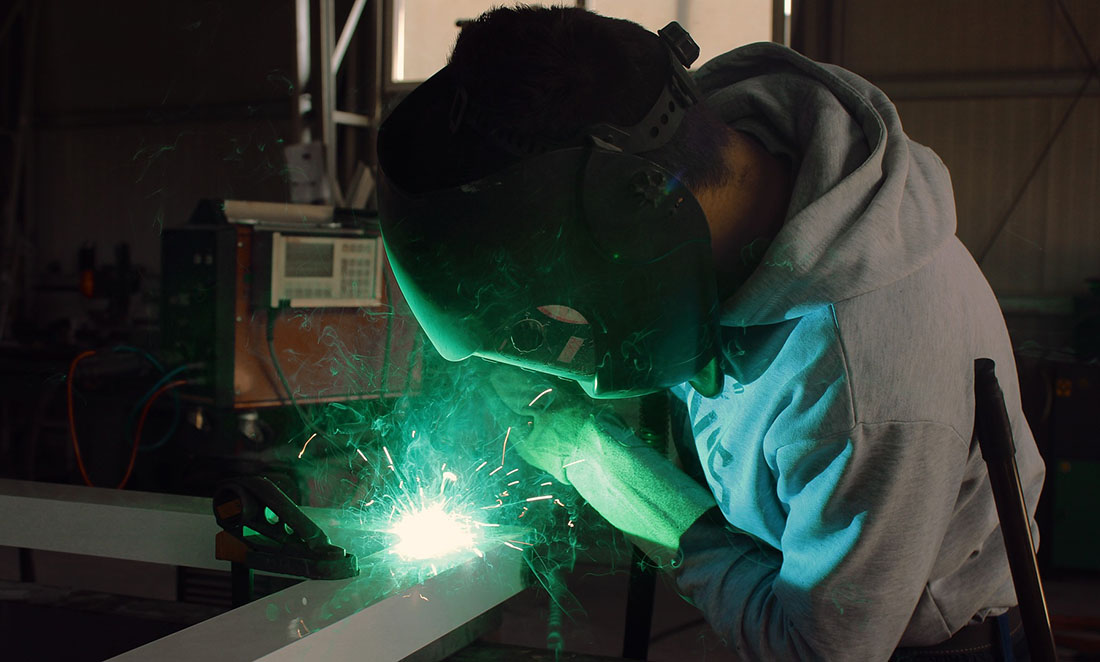A group of students peer through the thick visors of their welding helmets. They study each tool they will need to make a weld laid out in front of them. A student strikes the plate a few times and the torch catches alight with a flash. Their visor darkens, simulating the mask protecting their eyes from the bright flame. They begin their weld.
It’s a pretty standard experience for many high school welding students. Except, in this classroom, none of it is real.
Improving access and affordability
ECU master’s student Luke Spartalis created the Educational and Virtual Reality Welding (EVRW) program. It uses virtual reality (or VR) to interest students in the trade and teach them the basics.
The COVID-19 pandemic motivated many educators to improve access to remote learning opportunities. Luke’s VR welding software could be used during another pandemic. But in the meantime, it’s a more affordable way for students in regional and remote areas to learn how to weld.
EVRW runs on the Oculus Quest headset. Each device costs between $450 and $650, and schools could subscribe to Luke’s software for updates and support. This means a few thousand dollars can set up a small class to gain the understanding and skills of welding. That’s significantly cheaper than the tens of thousands required to build and equip a classroom for a single trade or STEM subject.
Tending the flame
Research shows VR’s immersive nature can improve learning outcomes by actively engaging students. Luke says a good VR program balances giving students enough interactivity to make it fun while keeping them on topic.
“If you implement too many features, the kids can get distracted,” he says. “VR is a great way to immerse kids and gain their attention, but if you add too much, they won’t focus on what they’re doing.”
“You can’t blame them because they’re in this really interesting new place. It’s better to keep it simple.”
Luke’s program uses VR haptics (transmitting and understanding information through 3D touch) to make it feel like the real deal. For example, users experience the sensation of welding ‘kickback’.
Inciting broader interest
Luke won last year’s Research and Innovation (Student) Project of the Year at the INCITE Awards. The awards recognise tech innovators.
Luke also showcased his program at the Resources Technology Showcase 2018 in Perth. It received positive feedback from professional welders and sparked interest in developing professional training tools.
While it goes beyond the scope of his original design, businesses could build on Luke’s program to teach more-complicated welding techniques, such as marine welding, before their staff experience it in the field. VR is already used this way for surgery training.
“The idea of it is not to replace teachers or anything like that. It’s just another tool in their kit to help with learning,” says Luke.
Luke says a number of schools have expressed interest in his program and would like him to add new types of welding.
He’s expanding his VR programs with dexterity tests for injury recovery and a chemistry lab session.









